The Infantry of Bulge: British
 By Richard Steer
By Richard Steer
Bulge: British is the latest release for the Late-War era of Flames of War. This book covers the British, Canadian, and Polish forces in Western Europe from August 1944 through to the end of the war in Europe.
It’s a book that many of us have been looking forward to for a long time. The arrival of the Comet is a large part of that anticipation, but there are several infantry formations in the book that also deserve a close look.
Kangaroo Rifle Company
Bulge: British takes the standard Rifle Company from the previous books and upgrades it. The overall structure of the formation is identical to those earlier iterations, but the Company HQ and Rifle Platoons now have the option of including Ram Kangaroo transports.
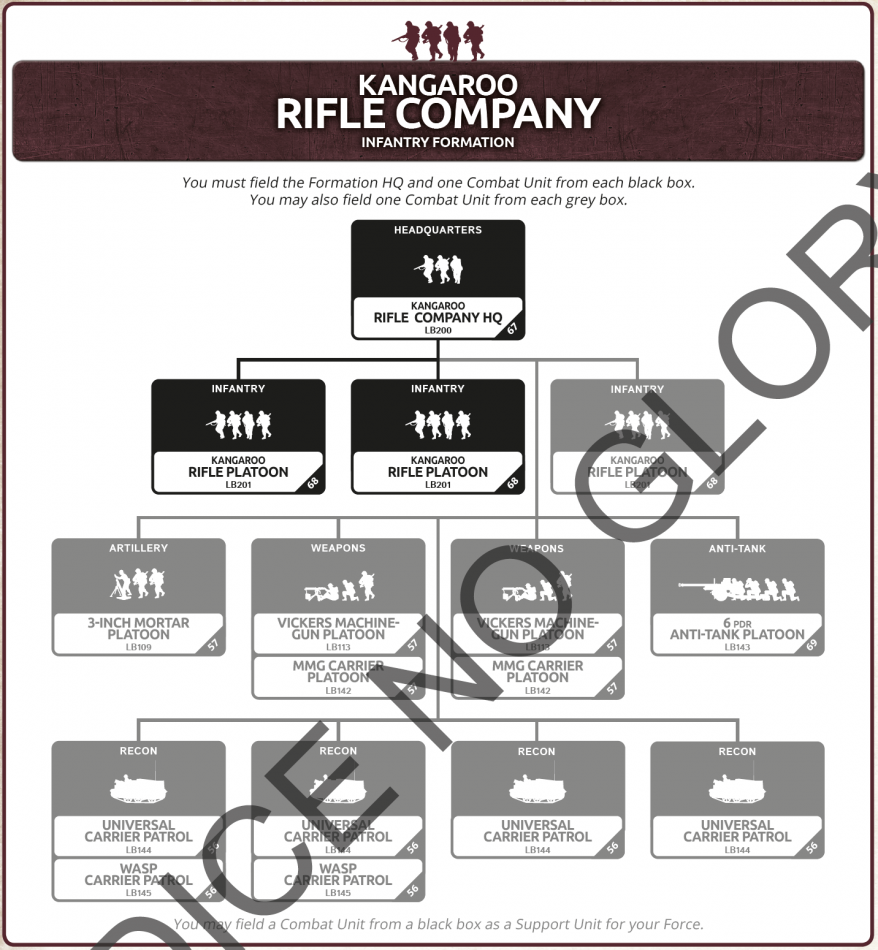
The Ram Kangaroo armored personnel carriers are significantly more capable than the Priest Kangaroos from the D-Day: British command cards, while also being a cheaper upgrade. They significantly increase the infantry’s ability to attack. Passengers cannot become Pinned Down while mounted in an armored transport unless one of the transports is destroyed: not an easy task given that the Kangaroos are Front 6. In addition, they have the Close Assault special rule, which allows their passengers to dismount during their Charge into Contact.

There are ten command cards that change the ratings of the Kangaroo Rifle Company, each themed on a different division, allowing plenty of scope for customizing your formation. Many of these are similar to the ones in D-Day: British, however, there are some differences. For example, Canadians are now rated as Fearless with Last Stand 5+. The formation’s transport can also be changed, with command cards for Buffalos and DUKWs.
One further command card uses the Kangaroo Rifle Platoon as the basis for a Dutch Resistance Group: a support unit that is similar in concept to the FFI and FTP Platoons from D-Day.
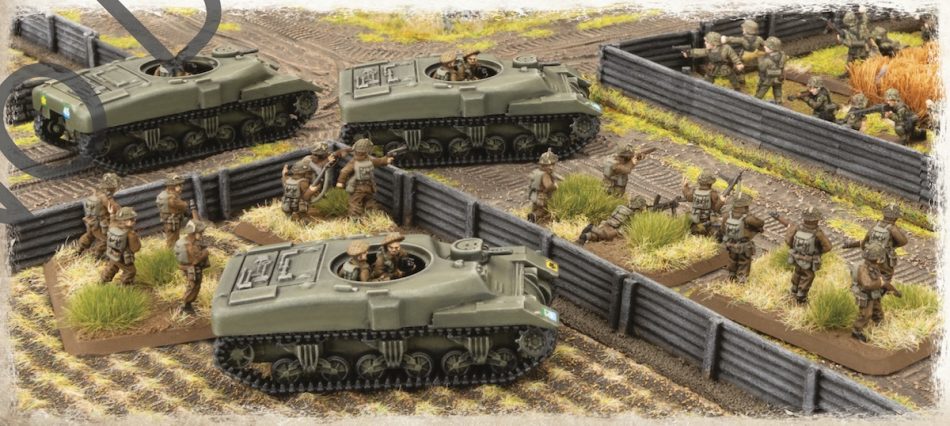
Black Bull Motor Company
This formation takes its name from the nickname of the 11th Armoured Division, “The Black Bull”. The only difference between this formation and the Motor Company in D-Day: British is that the Motor Platoons now have their M5 half-tracks as part of the list, rather than being a command card. These half-tracks can be upgraded by adding .50cal MGs, but this is not a cheap option.
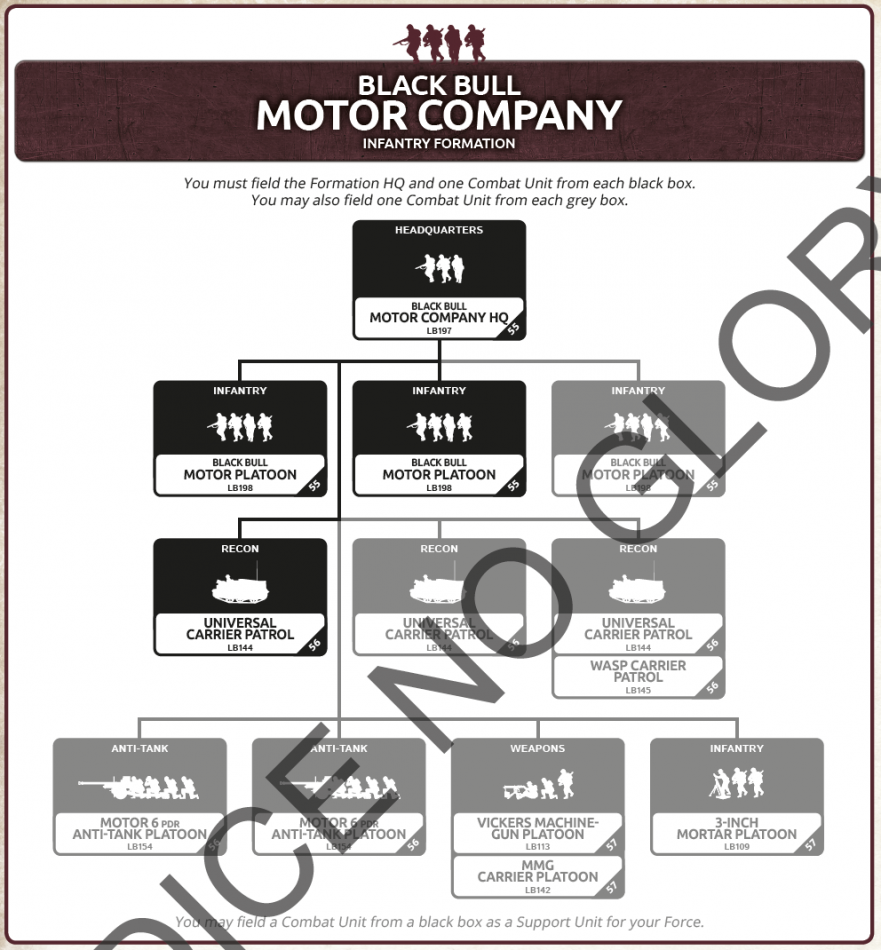
While at first glance it’s disappointing that this list doesn’t offer anything new, the formation is firmly grounded in the historical organization. There doesn’t seem to be anything that could have been added that would differentiate it from the earlier versions of the list.

Glider Pilot Squadron
The Glider Pilot Regiment was a remarkable unit. Comprised entirely of volunteers, and with every member of the regiment having the rank of sergeant or higher, these soldiers were tasked with piloting their gliders to the landing zone, then forming up and fighting as infantry.

The Glider Pilot Flight is a large unit of up to nine Bren/SMLE teams, with its size able to be further increased with up to two PIATs and a 2-inch mortar.
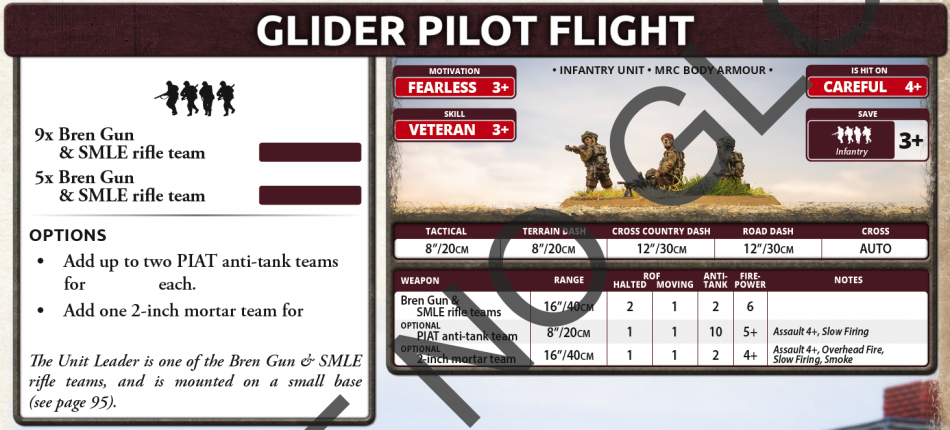
The Glider Pilots have a special rule, MRC Body Armour, which gives them an additional 5+ save if they fail their infantry save for a hit from an artillery bombardment. This occurs after any Repeat Bombardment rerolls.

Frost’s Parachute Company
This formation specifically represents the troops of John Frost’s 2nd Para Battalion that captured the northern end of the Arnhem road bridge on the first day of Market Garden. There are a few significant differences between this formation and the Parachute Rifle Company from D-Day: British.
The Parachute Platoons are Careful Fearless Trained, with Assault 3+, Last Stand 2+, and a 14″/35cm Cross Country Dash and Road Dash.
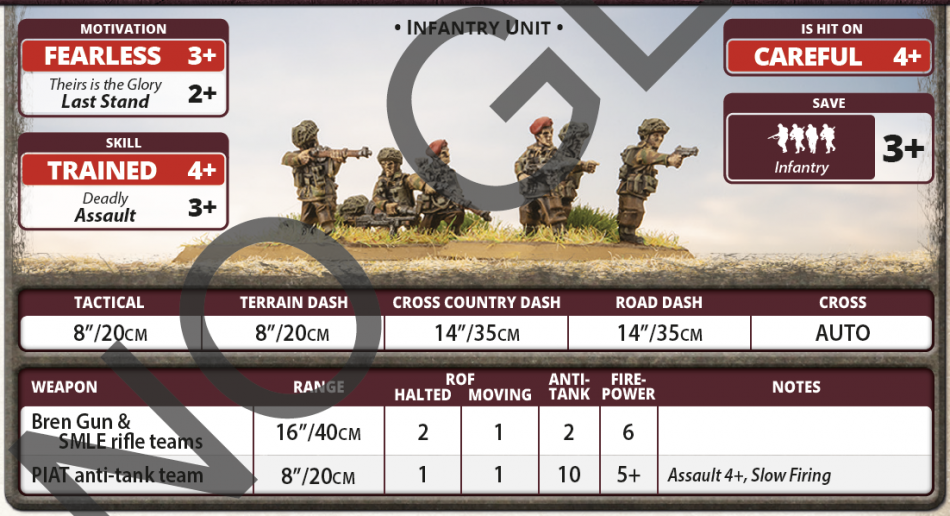
In place of some of the Parachute Platoons, the formation has the option of including a Glider Pilot Flight and a Parachute Royal Engineer Troop. The Engineers have one fewer Bren/SMLE team than the Parachute Rifle Platoon, saving a point, and the Pioneers special rule improves their ability to cross minefields to 2+.
The only dedicated anti-tank unit available to the formation is a 6pdr Anti-tank Section of one or two guns. This reflects the fact that only five 6pdrs made it into Arnhem, and these were split up around the perimeter. The lack of good anti-tank units in the formation probably means that it is better suited to historical scenario play, rather than open competitive events. On the other hand, when you compare it to the D-Day book the Parachute Platoons are getting Last Stand 2+ and the greater Dash moves for free. This could give it an edge if you are happy leaving the anti-tank work to your support units.
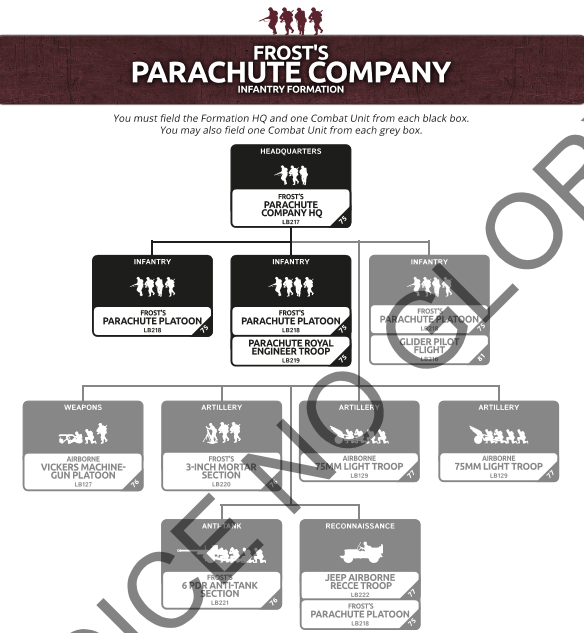
There are three Command Cards that can be used to upgrade the equipment of the Paras with Gammon Bombs, Flamethrowers for the Engineers, and body armor like the Glider Pilot Squadron. Further cards can be used to represent a company from the 1st Polish Independent Parachute Brigade, replacing their Last Stand 2+ with Counterattack 2+, or create a formation of Airborne Engineers.
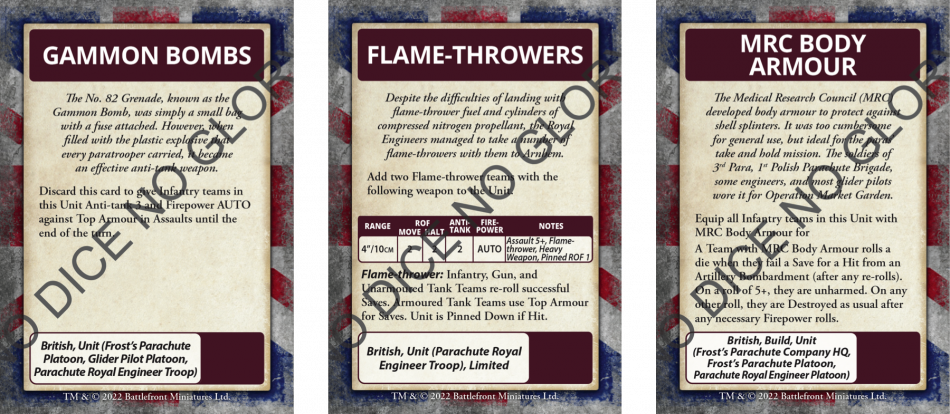
The remainder of 1st Airborne at Oosterbeek, 6th Airborne in the Ardennes, and Operation Varsity, are better represented by the Parachute and Airlanding Companies from D-Day: British.
Verdict
A popular Late-War British build for competitive play is taking a small Recce Squadron or Desert Rats Motor Rifle Company, and going heavy on the support options. Bulge: British doesn’t appear to offer any new infantry formations that suit that style of play.
What the book does offer is a solid upgrade for the Rifle Company. Putting infantry with great assault ratings into Ram Kangaroos, adding one of the command cards that improve their Rally rating, and with ready access to armored flamethrowers and the array of powerful support options that they have available, the Kangaroo Rifle Company represents the British and Canadian armies of the Second World War at the peak of their powers. It should be a potent attacking force on the tabletop.
A number of the new units could find a place as “Black Box” Formation Support in British and American forces, particularly the various airborne platoons. Their excellent morale, multiple PIATs, Gammon Bombs, and MRC body armour all lend themselves to being excellent defensive units for locking down an objective.
Bulge: British is a fitting note to close out the development of the British forces for Late-War. Its infantry formations offer plenty of options and cater to both historical and competitive play. Personally I’m looking forward to updating my Rifle Company and getting some Ram Kangaroos onto the table.


Enjoyed the summary! Interesting to see some options that I don’t recall being available in v3.
Are the Polish paratroopers a change to the Frost unit or the regular paratroopers? I could see them being popular.
Thanks Owen. The Polish paras card modifies the Frost Company HQ and the Frost Parachute Platoons.